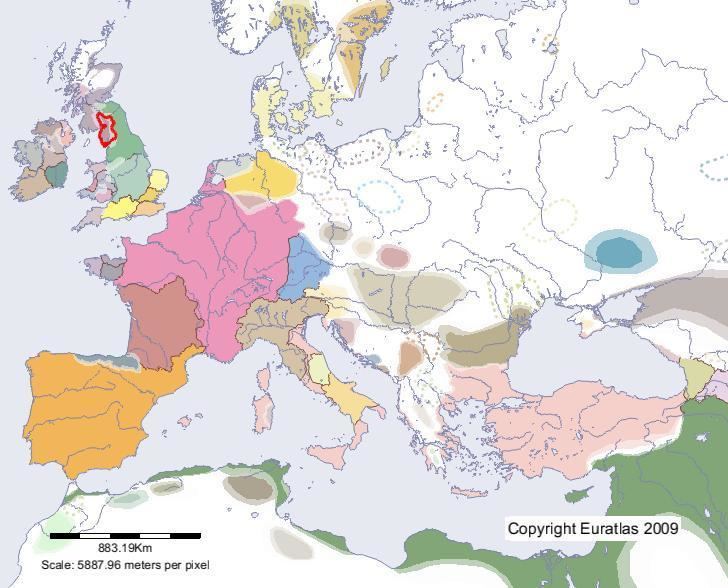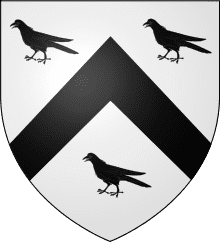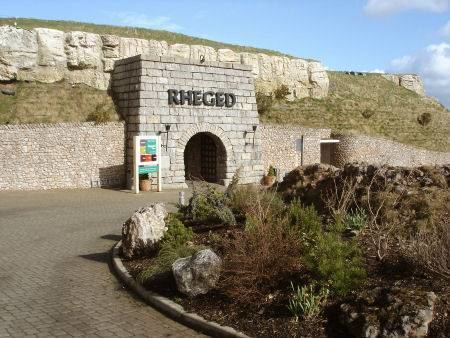 | ||
Rheged ([ˈr̥ɛɡɛd]) was one of the kingdoms of the Hen Ogledd ("Old North"), the Brittonic-speaking region of what is now Northern England and southern Scotland, during the post-Roman era and Early Middle Ages. It is recorded in several poetic and bardic sources, although its borders are not described in any of them. Some modern scholars have suggested that it included what is now Cumbria in North West England and possibly extended into Lancashire and Scotland. In some sources, Rheged is intimately associated with the king Urien Rheged and his family. Its inhabitants spoke Cumbric, a Brittonic dialect closely related to Old Welsh.
Contents
- Researchers believe they have found the kingdom of rheged in dumfries and galloway
- Location
- Kings of Rheged
- Southern Rheged
- End of Rheged
- Rheged Centre
- References

Researchers believe they have found the kingdom of rheged in dumfries and galloway
Location

The name Rheged appears regularly as an epithet of a certain Urien in a number of early Welsh poems and royal genealogies. His victories over the Anglian chieftains of Bernicia in the second half of the 6th century are recorded by Nennius and celebrated by the bard Taliesin, who calls him "Ruler of Rheged". He is thus placed squarely in the North of Britain and perhaps specifically in Westmorland when referred to as "Ruler of Llwyfenydd" (identified with the Lyvennet Valley). Later legend associates Urien with the city of Carlisle (the Roman Luguvalium), only twenty-five miles away; Higham suggests that Rheged was "broadly conterminous with the earlier Civitas Carvetiorum, the Roman administrative unit based on Carlisle". Although it is possible that Rheged was merely a stronghold, it was not uncommon for sub-Roman monarchs to use their kingdom's name as an epithet. It is generally accepted, therefore, that Rheged was a kingdom covering a large part of modern Cumbria.

Place-name evidence from Dunragit (possibly "Fort of Rheged") suggests that, at least in one period of its history, Rheged extended into Dumfries and Galloway. Archaeological excavations at Trusty's Hill near Gatehouse of Fleet have led to claims that the kingdom was centred on Galloway early in the 7th century. More problematic interpretations suggest that it could also have reached as far south as Rochdale in Greater Manchester, recorded in the Domesday Book as Recedham. The River Roch on which Rochdale stands was recorded in the 13th century as Rached or Rachet. These place-names may (apparently) incorporate the element 'Rheged' precisely because they lay on or near its borders. Certainly Urien's kingdom stretched eastward at one time, as he was also "Ruler of Catraeth" (Catterick in North Yorkshire).
Kings of Rheged
The traditional royal genealogy of Urien and his successors traces their ancestry back to Coel Hen (alias King Cole), who is considered by many to be a mythical figure; if he has some historicity, he may have ruled a considerable part of the North in the early 5th century. All of those listed below may have ruled in Rheged, but only three of their number can be verified from external sources:
Southern Rheged
A second royal genealogy exists for a line, perhaps of kings, descended from Cynfarch Oer's brother: Elidir Lydanwyn. According to Bonedd Gwŷr y Gogledd Elidir's son, Llywarch Hen, was a ruler in North Britain in the 6th century. He was driven from his territory by princely in-fighting after Urien's death and was perhaps in old age associated with Powys. However, it is possible, because of internal inconsistencies, that the poetry connected to Powys was associated with Llywarch's name at a later, probably 9th century, date. Llywarch is referred to in some poems as king of South Rheged, and in others as king of Argoed, suggesting that the two regions were the same. Searching for Llywarch's kingdom has led some historians to propose that Rheged may have been divided between sons, resulting in northern and southern successor states. The connections of the family of Llywarch and Urien with Powys has suggested to some, on grounds of proximity, that the area of modern Lancashire may have been their original home.
End of Rheged
After Bernicia united with Deira to become the kingdom of Northumbria, Rheged was annexed by Northumbria, some time before AD 730. There was a royal marriage between Prince (later King) Oswiu of Northumbria and the Rhegedian princess Riemmelth, granddaughter of Rum (Rhun), probably in 638, so it is probable that it was a peaceful takeover, both kingdoms being inherited by the same man.
After Rheged was incorporated into Northumbria, the old Cumbric language was gradually replaced by Old English, Cumbric surviving only in remote upland communities. In the 10th century, after the power of Northumbria was destroyed by Viking incursions and settlement, large areas west of the Pennines fell without warfare under the control of the British Kingdom of Strathclyde, with Leeds recorded as being on the border between the Britons and the Norse Kingdom of York. This may have represented the political assertion of lingering British culture in the region. The area of Cumbria remained under the control of Strathclyde until the early 11th century when Strathclyde itself was absorbed into the Scottish kingdom. The name of the people, whose modern Welsh form is Cymry has, however, survived in the name of Cumberland and now Cumbria; it probably derives from an old Celtic word *Kombroges meaning "fellow countrymen".
Rheged Centre
The name Rheged has been adopted by the Rheged Centre close to Penrith in Cumbria. The centre has a number of retail outlets and cafés with a Cumbrian theme, as well as the largest turf roof in Europe and a giant cinema screen. A special film was commissioned for the opening of the centre in 2000 but this film is no longer being shown. (Rheged: The Lost Kingdom - http://www.imdb.com/title/tt0248362/ )
